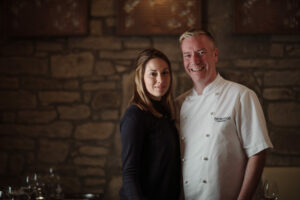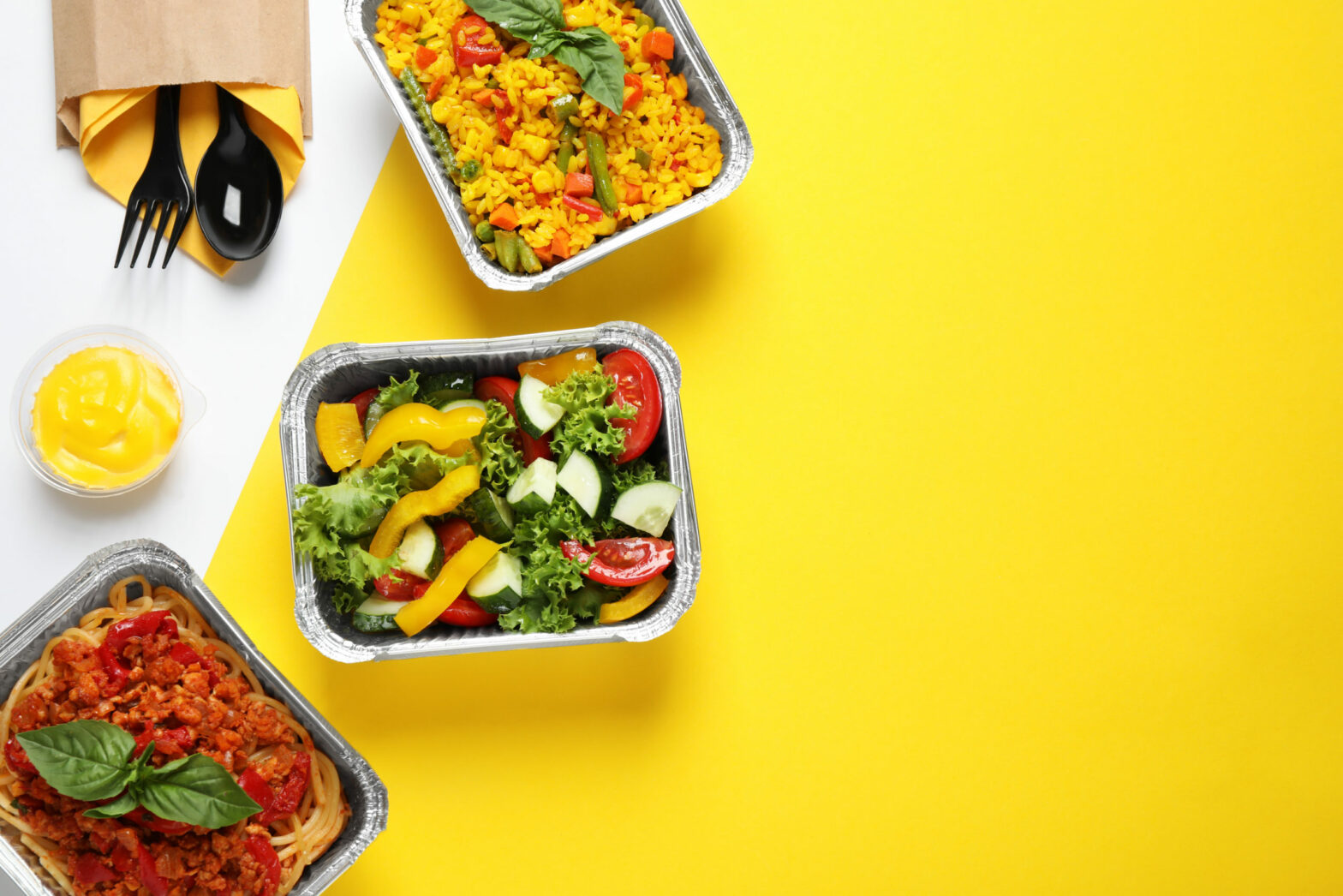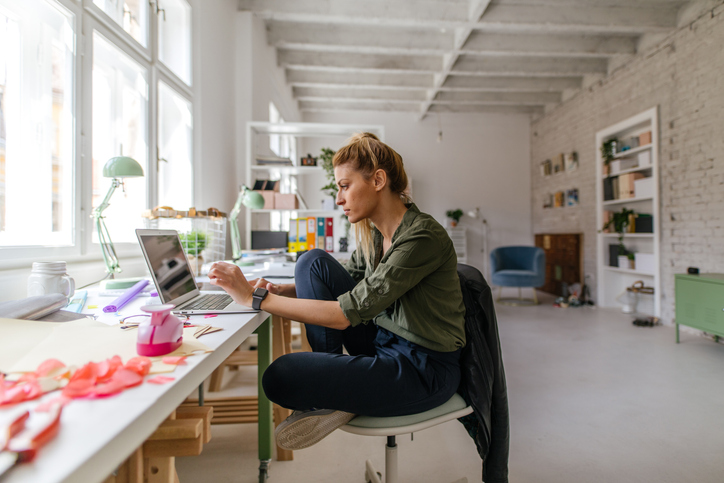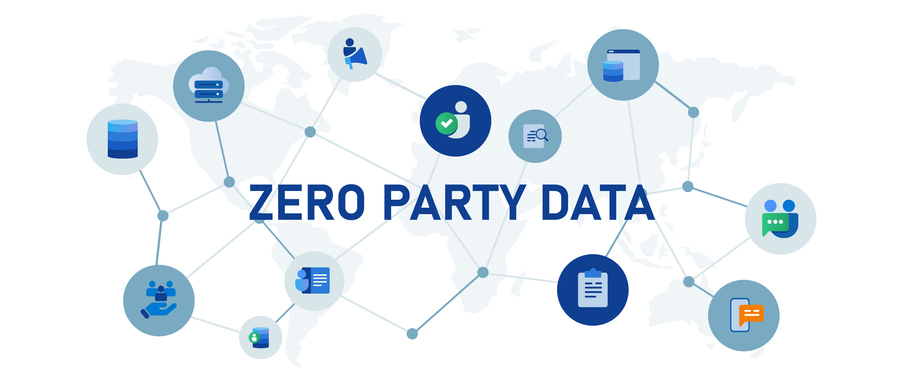The impact of COVID-19 has brought about so many changes for businesses. One of the main changes we’ve seen for restaurant and pub businesses is moving towards takeaway orders.
Data from Kantar shows that deliveries surged in the week leading up to the first lockdown (March 16-22), with delivery trips up 57 per cent year on year.
According to MCA’s Channel Pulse survey (from April 6-12), the average frequency that people used takeaway delivery was 2.3 times that week.
“There have been several success stories to come from the hardship that this year has brought to the hospitality, events, and catering industry, but the biggest, in my opinion, has been the rise of takeaway,” said Charlie Dean, managing director at packaging firm, Catering24.
Not only has it kept a number of our businesses afloat during this most difficult of times, but it has increased the quality of the market to a level we have not seen before.”
In this article we’ll be looking at how you can pivot your pub or restaurant to a takeaway model and what considerations you need to factor in before you make the shift.
What you need in order to refocus your pub or restaurant on takeaway and delivery
To make things easier, we’ve broken down the need-to-know elements of shifting your focus to takeaway and delivery.
How you will take orders
The first is somewhat obvious: consider where you’re taking your collection and delivery orders. Having an online ordering system is easier because orders can come in when you’re tending to other parts of the business.
From here, the main question to ask if yourself is whether you’ll be taking orders through the likes of Deliveroo, Uber Eats and Just Eat. On the plus side, they could give you more exposure to local people looking for a takeaway which in turn could give you more business. However, they take a decent cut from your order charge – as much as 30 per cent in some cases. You also have to rely on somebody outside the business to make deliveries for you.
Of course, it doesn’t have to be an either-or scenario: you can opt for both. Nor does it have to be a case of getting to grips with an overly complicated new bit of tech. You could have a terminal in your POS system that lets you take orders online. A lot of POS systems will be capable of accepting integrations from payment providers that will make it easy.
>See also: The essential guide to point of sale (POS) systems
Speaking of POS, if you’re not set up to take cashless payments already, it’s something you should strongly consider. Many customers, especially in cities, don’t carry cash and with minimum contact being desirable during COVID-19, customers will look on businesses who take cashless payments more favourably.
The last point to consider here is whether you are opting to take telephone orders. Be aware that taking orders over the phone takes staff members away from the kitchen or from taking deliveries for a longer period of time which might not be the most beneficial move for you. That said, you could lose out on customers who prefer to use the phone.
Safety conditions
Safety conditions in your pub or restaurant are paramount anyway, but they’re even more critical during COVID-19.
Under social distancing guidelines, it may be in your interest to have fewer staff working, be they working in bubbles or in staggered shifts. Within that, keep hand sanitiser within different parts of your pub or restaurant, encouraging staff to wash their hands and clean the equipment more frequently.
Try and keep your kitchen workers and your delivery workers separate so there’s less chance of spreading the virus.
Will you offer a limited menu?
To cut down on costs and food waste, some restaurants have opted to limit their menu to their most popular items. This may vary depending on what kind of food you offer and how often your menu normally changes.
What about packaging?
In times where takeaway is more prevalent, consumers have become more aware of the packaging demand that they create.
“Prior to the three-month peak of COVID-19 [during the national lockdown], our business would have sold half a million paper cups,” said Charlie Dean, managing director at Catering24. “During that period, however, we sold none. But our sales for food and plastic microwavable containers went through the roof.”
He added that after the first lockdown started to ease, sales of paper cups went right back up again. “It is a measure of how the trends are going and what is happening within our industry.”
Dean talks about the popularity of burger boxes, saying that they would normally come in a polystyrene container. Since COVID, bars and restaurants have put a lot of thought into the packaging in which to sell their premium grub.
“They have shifted to a premium cardboard box style that opens out into a platter,” he said. “Foil containers with lids have been popular, particularly with Sunday dinners.”
How do you let your customers know you’re offering takeaway?
Next, take a look at your marketing. It’s not the time to entice new customers. Instead, turn to your existing customer database. This is all the better if you have a CRM because you can send more targeted emails based on what you know your customers like. If you’re opting for emails and/or deals, send them around dinner time when customers will be more likely to look for places to eat.
> See also: The best CRM system for your micro business
For those who don’t have a CRM, social media is ever-useful here. You’ve already got a loyal base of customers who, ideally, you’re communicating with regularly. Keep this up when you’re shifting to takeaway – let them know how they can order from you and what items you have available for delivery.
Could shifting to a takeaway model change my business?
There’s a chance that this focus on takeaway could change your business in the long-term. Even after lockdown eases once again, some people – especially the vulnerable – will still be less sure about coming to dine out so it’s worth keeping your takeaway going. It may also open you up to a new market in the form of those who prefer takeaway to dining in.
Any long-term changes that you make should be incorporated into an updated business plan.
How we shifted our businesses to takeaway and delivery
It’s all well giving you some tips on how to pivot to takeaway, but it’s better to hear it from other small businesses. We’ve spoken to two restaurants who have made takeaway their primary focus during the peaks of COVID-19. Here’s how they did it.
Tanisha Broady, owner of Rock of Virtue, Cambridge

When Tanisha took over Rock of Virtue – which at the time sold tea, coffee and sandwiches – she decided to bring in a Caribbean food offering. And she’s glad she did. She believes it’s what’s kept her business afloat during the toughest parts of 2020. Here’s how she shifted attention to takeaway during the nationwide lockdown back in March.
How did you go about shifting to doing takeaway orders? What kind of practical steps did you take?
We were already registered with Deliveroo and JustEat, to be honest. So, for us to move to our takeaway, initially, what we did was just rearrange inside the café.
What about talking to your customers? How did you let them know that you were just doing takeaway and delivery?
In rearranging the café, that would then ensure that customers are aware that when they come, they’re not able to sit in. We also put a notice on the door just to inform customers that we’re doing takeaway and deliveries only.
We have a lot of students too. Initially, I started giving most of them a business card. And that was before the lockdown. They can call and pre-order and we will have their food ready. And then that will mean they don’t have to come and wait. It stops things from getting crowded because otherwise we could only facilitate two or three people inside at a time.
I found the people were very, very helpful in terms of working with us, because obviously, they are our customers, and they want to see the best for us. It was very easy for us to communicate with our customers. Most of the customers come to us daily, over and over again. And you know, we do have some that will ring up. They’ll ask if they can order and I always said yes, you can order and it’s best for you to order on the phone. And based on what they’re ordering, I’ll give them the time period of what time their food will be ready.
Have you been using Facebook more?
Yeah. Facebook. We have Instagram and we’re on WhatsApp as well. I started to advertise to say that we were remaining open, just sending out an advert to let people know we’re doing collection and takeaways. And please contact us on our number as we appreciate calling in pre-orders.
So yes, definitely, we had to go for the social media a lot more to let people know. And we do still have people calling in. We have a lot of people ring up to ask, ‘Are you guys open?’ These people probably just had the number and they don’t use the social media, so they’re not aware.
I see that you’ve got an order online option. Is that independent of Deliveroo and Just Eat?
Yeah. To be honest, before going into lockdown, we weren’t used delivery platforms that much. The footfall customers were keeping things going but having the delivery side of things now makes business even better.
The other service we use is Flipdish. This is the one we use the most. We feel more comfortable using it because its costs and charges are much lower than Just Eat and Deliveroo, which take around 30 per cent to 35 per cent. I’m going to be honest with you – even though I’m registered with Deliveroo, I haven’t used it for months. I only occasionally use Just Eat.
And yes, Deliveroo and Just Eat are sites where people can know that you’re open and people can place an order but personally, it’s just too much. It’s like they’re taking away all of all of the profit that you would make.
And how about the kitchen? Did you have to make changes or have fewer people in the kitchen to meet guidelines?
Yes, initially, from the whole COVID thing, everything has to be changed enough to ensure that we were going with the guidelines.
For me personally, when I saw what was happening in the news, I started adjusting things. I briefed my team because we’re a family-run business. I have one volunteer with me and she’s a senior, so I started briefing her first as she was my main concern. Even though she doesn’t have any underlying illnesses, she would class as a more vulnerable person.
The lockdown in March was really one of the hardest things for her. And I didn’t want to have to go through the procedure again [for the second lockdown] of telling her, ‘Look, we’re going into a lockdown and you’re not able to come in’, because it means everything to her. I started briefing her to say that it’s possible that there’s going to be another lockdown but if there comes another one, then we’re going to do takeaway collections and deliveries.
How has the size of your menu changed?
There are certain things that I will remove from the menu when we’re doing takeaway only. So, when a customer goes online, they are either unavailable, or it’s been hidden. The customer is not able to see it. Because the takeaways are quite different from when everyone was coming in, you don’t have that footfall anymore like you used to.
So, we reduce the menu to prevent wastage. We do our best to make sure we provide what is there rather than a customer ordering something and we don’t have it, so is best for us to minimise the menu.
Do you see takeaways being a long-term change? Or do you think it will go back to being predominantly in-house dining once the pandemic settles down?
The takeaway thing is something that I’m working on in every way possible. I want to push to get it done even more, because we have the [second] lockdown and when the weather gets cold, people don’t go out as they used to; they’ll be sitting down the kids. That’s definitely something that we’re hoping and praying will get back to normal because it is a good thing for us.
It’s a good thing for the customer as well because here, it’s more like a family, a community.
Just before the lockdown, we are also registered for a non-profit as well for our business.
I’ve been a chef for so long, and someone from the council connected me with the church. I started doing 50 portions of soup to distribute to vulnerable people every single day.
At the moment, we’re looking to get some funding help to get us the proper equipment we need here to focus more on producing the Jamaican side of the food. And in doing so that will help us to provide at least seven jobs, job training and working experience. And training for people to get right the food safety hygiene training from level one all the way to level three.
Paul and Lisa Wedgwood, owners of Wedgwood the Restaurant, Edinburgh

Paul and Lisa Wedgwood, of Wedgwood Restaurant in Edinburgh, learned a lot about the practical sides of takeaway. They offer a fine dining at home experience which has its own challenges when it comes to collection and delivery.
What considerations did you have to make before you went to takeaway?
Paul: We went to take away before we actually got closed down. I think the week before, we could see it coming as the rest of Europe was shutting down. It was inevitable what was going to happen so we just got ourselves ready, got a menu together from what we were doing already. Then we do have to work out how we were going to do full service in the restaurant while doing takeaway at the same time. It was just finding that balance for that first week.
And then, of course, we got shut down. And then it was just to go full-on takeaway. And then it was a case of how we could use all of the stock that we were left with in a safe way. We had to lose quite a bit so we donated it to local food banks.
We find that other restaurants have offered a limited menu for their takeaways. I know for you, it’s a bit different in that you change your menu week-to-week, and you offer a fine dining experience at home. And you have quite short windows for collection and delivery.
Lisa: People could choose what they wanted for dinner, but it also became like a regular feature in peoples’ week. If we didn’t change it, then they’d have it one week and maybe not come back for another month. Changing every week, we’ve had customers that have ordered pretty much every single week since March, because they’re having something different, they’ve got their favourites.
Paul: It’s almost like being in the restaurant because they don’t have to have the same things. So yeah, we just like to stand out.
Lisa: Then there’s collection and delivery, that it was something that came about organically, because we’d never done it before. We just have to kind of think what was the safest way COVID-wise of it being collected. We didn’t want a third-party delivery so we haven’t done anything like Uber Eats or Deliveroo or anything like that. We relied on friends to deliver and utilising people we knew would help us, that knew our branding and who we were. We still felt like it was our brand right up to the door. Delivery drivers didn’t know anything about how we wanted everything given to the person that ordered it.
Paul: Every single person delivering to the door knew exactly what was in every single tub. They could answer questions about things like dietary requirements at the point of delivery.
The program that you use to take orders – that’s the same one that you’ve always used, the online form?
Lisa: Our website was done up in the last year to make buying vouchers simpler. We spoke to our web designers to see if we could quickly change the website, make it sharper and allow people to buy products. And we were able to roll it out within a week. We tweak it now and again and it works for us. The fact that we’re not paying any fees is great.
With our website, we have a payment provider. We went with Stripe, so guests will pay online and it’s all very secure. We don’t get to see their details and hopefully it’s an easy process. It has been working all these months. I’m sure there are ways we could make it better but why change it when it’s working at the minute?
Paul: This is the way that we settled on immediately and it seems to work.
From looking at your social media, you’ve got quite an online following, as you say people who are quite loyal, what kind of role does social media play in helping with this pivot?
Lisa: I think that we’d always been present on social media. But the restaurant was busy anyway, so we’d never pushed it. We were just telling people what dishes we have. Now that nobody’s in the restaurant we have to tell people what we’re doing and it’s our local market. And you have to be talking to everybody, people who live in the Lothians around us and they’re the people who we want to buy our products so we’ve done a few Facebook ads.
Paul: We were inundated – I mean absolutely inundated – with requests. We started with a three-or-five-mile delivery and then it just kept getting bigger and bigger and further out of Edinburgh with pockets in, say, Livingston. It just made sense to say, ‘Okay, we’ll dedicate a driver just to go out to Livingston’ which tended to mostly be me, I would pick up most of the West Lothian routes.
I managed to work my way out of out of the main preparation of the kitchen, I just oversee it now. And then I was I was really invested and involved in the delivery side of things. Most of my team came back off furlough to cope with the demand.
If it’s something that you reheat at home, then I suppose distance is less of an issue.
Lisa: Yeah, we deliver food cold to reheat but it’s all being delivered at the right temperature. We tell the guest to pop it in the fridge until it’s ready. We make the instructions really easy to follow.
Paul: When I write the menu, I write with the cooking instructions in mind rather than the dishes in mind. It just means that you have three different choices for each course. I try and write it so that it makes the set-up very easy at the end for the client.
Do you take orders over the phone as well as online?
Lisa: I do try and get the guests to order online as they have a record of everything and they feel safe. It’s a good way of people tracking orders themselves and making sure no mistakes have been made.
And being more hands-off in having everything online. It also helps to keep you in line with COVID restrictions and social distancing. What kind of changes have you made in the kitchen to adapt to those changes?
Paul: Well, a kitchen is a hard environment to change to make safer. But with that in mind, we all work side by side and no one works face-to-face. It’s just one long galley kitchen, if you will. Then we’ve upped our cleaning and followed the advice about high contact points and stuff like that. When I started delivering, I stopped doing prep in the kitchen. I was more concentrating on writing menus and getting the deliveries out as everything was growing and expanding.
Lisa: Everybody’s getting changed on-site and getting regular temperature checks too. We’re very lucky that everyone’s been well on the team and nobody that we’ve come into contact has had COVID so we count our blessings.
Given what’s happened this year, do you think a focus on takeaway is going to become more of a long-term thing, enough to even be a change in your original business plan?
Lisa: I think we’ll always do it because we know how to do it now. The bare bones are in place. It’s made us realise what we can do and how we can do it efficiently. We will always do it, but I think that our love and our joy is having people in the restaurant providing that kind of a wonderful meal where we can wait on our guests.
We can’t wait to get back to that point as well. But, you know, we’re enjoying this part of it, bringing what we can to people’s homes.
Paul: I got around it back in July when lockdown starting easing we introduced an at-home al fresco service. That was just me taking a mobile kitchen to someone’s back garden, setting up a mini restaurant in their back garden and that definitely has become a new part of the business model as well.
So as the restrictions have brought new arms to the business and, although it’s a horrific situation, there have been some positives from it.
Lisa: I think as any business owner, you have to think of ways to survive. And if you don’t, unfortunately, that’d be the end of the business. We’ve got 20 staff and we knew that they were relying on us to keep them employed. Every single one of our staff members have been behind us 100 per cent, we’ve not made any redundancies and we’re open to go right through to next year. And they have normality and the same team. Credit to our team as well, because Paul and I have pushed forward, and it’s been a really hard slog as well, but we’ve enjoyed it.
Paul: In training, I never thought for one second that my food was going to end up in plastic tubs!
Lisa: It has to be a consideration because not only does the food have to taste good, but it has to look good when it arrives. It has to be easy to prepare too. I’m Paul’s wife and I don’t cook. He writes the recipes and then I will read them and I will ask him more questions: how much oil have you put in the pan, what the temperature is and how long? I know they are the questions that I would ask. Somebody reading them has to feel confident that they’re going to be able to achieve making the dinner.
What advice would you give to restaurant and pub owners who are looking to move towards takeaway?
Lisa: Don’t change too much because people are coming to you because of who you are what you already do.
Paul: They want to see you so don’t try and change what you do. You just need to refine the actual things that you are doing.
Lisa: And I’d say ask other businesses for help. In the hospitality industry we all come together when need be.
Paul: During lockdown, we all talked to each other about delivery costs. It wouldn’t be any good if we all came in with ridiculously inflated costs. Quite a few of us spoke early on – it’s brought us together.




